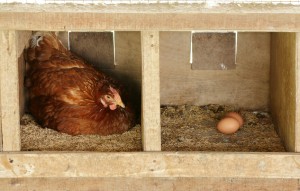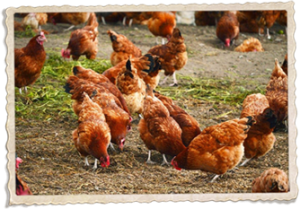Chickens can be as finicky as Goldilocks when it comes to their nesting boxes. They can’t be too big or too small, too hard or too soft; they need to be just right for your chickens to use them. Finding this perfect middle ground can be difficult, but it’s not impossible.
Here we’ve put together some general rules when making your chicken nesting boxes to help you get it right the first time:
Why use nesting boxes?
Chicken nesting boxes are an essential component to raising backyard chickens. Why is that the case? Because nesting boxes make it much easier for you to collect eggs. Unless you want to do an Easter egg hunt every morning, nesting boxes allow you to easily find and collect your hens’ eggs. Plus, they’re a safe and comfy place for your chickens to rest in.
Placement
Where the nesting boxes are placed in the coop matters a great deal. Boxes should be placed in dark, quiet areas of the coop, no less than 18 inches above the floor. They should not be the same height as your roosting bars. This is because you may find your chickens trying to sleep in the boxes rather than the roosting bars. This isn’t a huge problem, but it will cause you to be cleaning out the boxes every morning, which could become a hassle.
Number
The number of chicken nesting boxes you have in your coop will depend on the number of hens you have. In general, you should have at least one box for every seven hens in your flock, but you are welcomed to have more. If you want your chickens to be “certified humane,” then you should have one box for every five hens.
Size
The size of your nesting boxes will depend on the size of your chickens. Standard-sized birds such as Leghorns or Plymouth Rocks should have a box that is 12 inches deep, tall, and wide. Meanwhile, larger birds will need a 12 X 14 X 12 box, and smaller birds can get away with 10 X 12 X 10. The goal is to have a box that is snug, but not cramped, and small enough where hens won’t try to bunk together.
Materials
Boxes need to be comfortable for the hen and soft enough where they won’t accidentally break their freshly laid eggs. Luckily, there are many different materials you can use to achieve a soft, comfy box. You can opt for nesting pads, or you can make your own boxes using straw, pine shavings, sawdust, and/or leaves. Whatever materials you use, just be sure you hang curtains above the box for added privacy.
Training your hens
Chickens are not born automatically knowing what nesting boxes are for. However, it’s very easy to teach them. Start training them when they’re young–before they’ve started laying. Place a golf ball, ping pong ball, or fake egg in the box and your hen’s instincts should kick in. Soon enough, they’ll learn that the nesting box is for nesting.
If you have further questions on how to prepare the perfect nesting boxes for your chickens, contact Chickens for Backyards today!

